
Calculating at the Jet Propulsion Laboratory. NASA/JPL photo.
Starting, say, in the early 1960s, when computer chips started to become available, one of the first applications was making electronic calculators. That was a huge advance in technology, but it also is sad, because mechanical calculators became obsolete. A whole genre of elegant mechanical engineering was lost.
In the film Hidden Figures, a Friden calculating machine is used as a prop, sitting on the desk of Katherine Johnson. In a 1966 photo in the Wikipedia article about Johnson, she is sitting in front of a mechanical calculator. Mechanical calculators got us to the moon (though the Apollo capsules had a rather primitive computer). You can see a Friden STW10 in operation in this YouTube video. Those machines were complex enough to do real math, not just addition and subtraction.
Many machines as elegant and expensive as the Fridens were preserved, and many have been restored. More humble machines, however, of the type used by accountants, met fates that were much more demeaning. Even when they survived, few were considered to be worth restoring.
I had wanted a mechanical adding machine for a long time. Recently I found one in such good condition that it could be restored with little effort beyond cleaning it and oiling it.
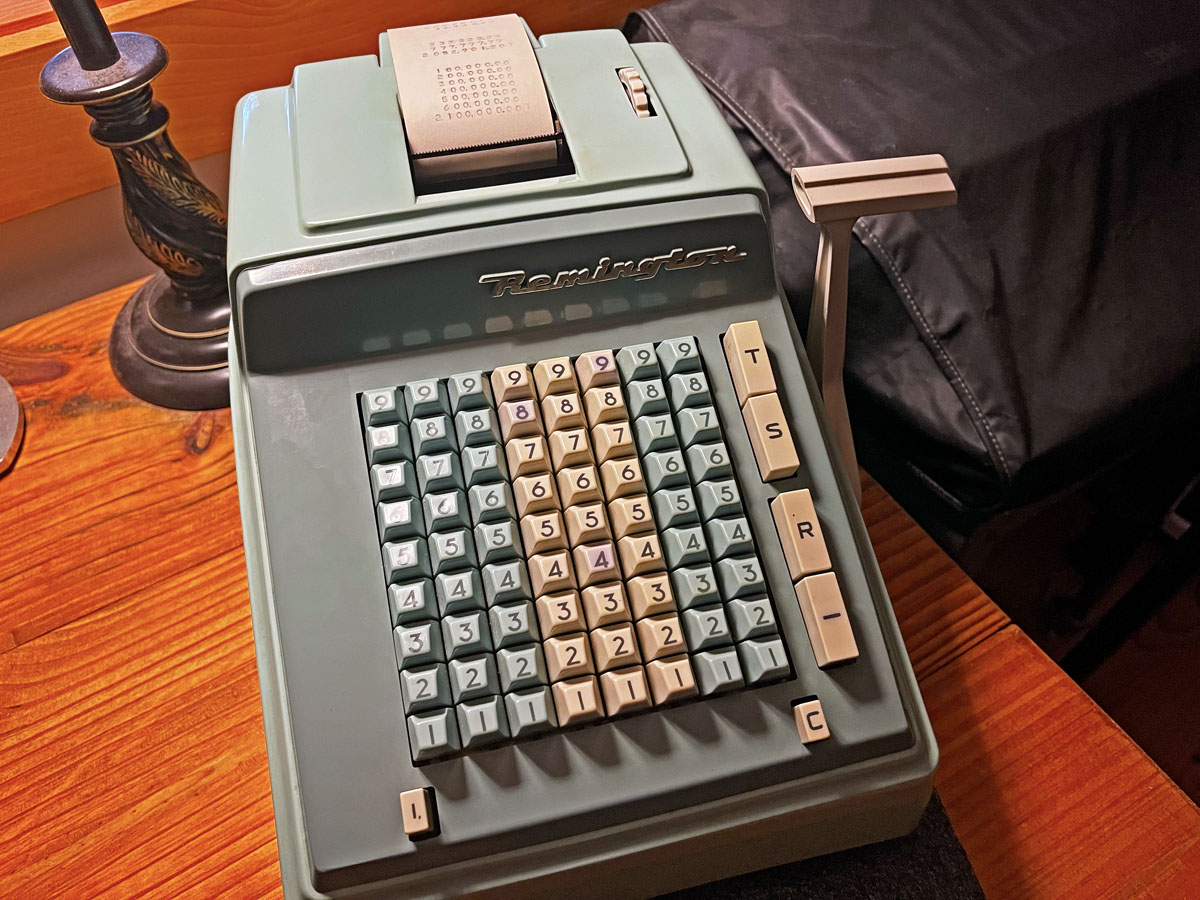
Remington Model 10811-10 adding machine
This is a Remington Model 10811 (or Model 10811-10) adding machine. I believe it was made in the early 1960s. It’s a non-electric model, but an electric model of the same machine was available, as you will see in the manual.
It is my curse to want to rescue and adopt every old example of beautiful mechanical engineering. Fortunately I don’t have the space for that, nor would I be able to afford a machine such as a Friden STW10. This Remington adding machine came from eBay, from a seller in East Bend, North Carolina. I met the seller halfway and picked up the machine in person rather than having it shipped. I also learned the history of the machine. I am its second owner. It belonged to the seller’s parents, both now in their late 80s. They ran a TV repair shop many years ago, and they used the adding machine to add up customers’ bills. It was completely dust free, having always been kept covered. The cover came with the calculator.
Machines like this need lots of oil and even a bit of grease in some places. The oil and grease had become gummy, but I’ve started the process of cleaning it up. It works perfectly. I actually will use it for managing money (which is what it was designed for), because the electronic calculator I’ve been using for the past few years isn’t heavy enough and slides around on the desk.
Judging from eBay, there seem to be quite a few of this model of adding machine still in existence. Most are in rough shape, though. I have scanned the eight-page manual, and I’m posting it here for those who are are Googling for the manual. I seem to have one of the few copies of the manual still in existence.

The manual:
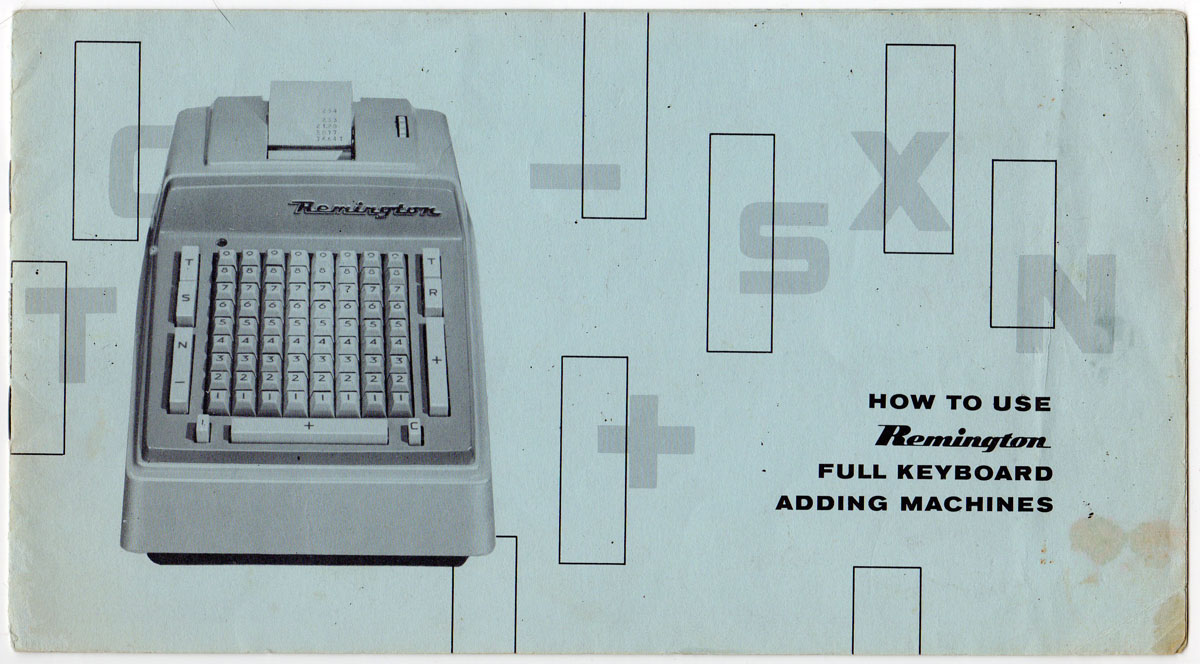
Click here for high-resolution version
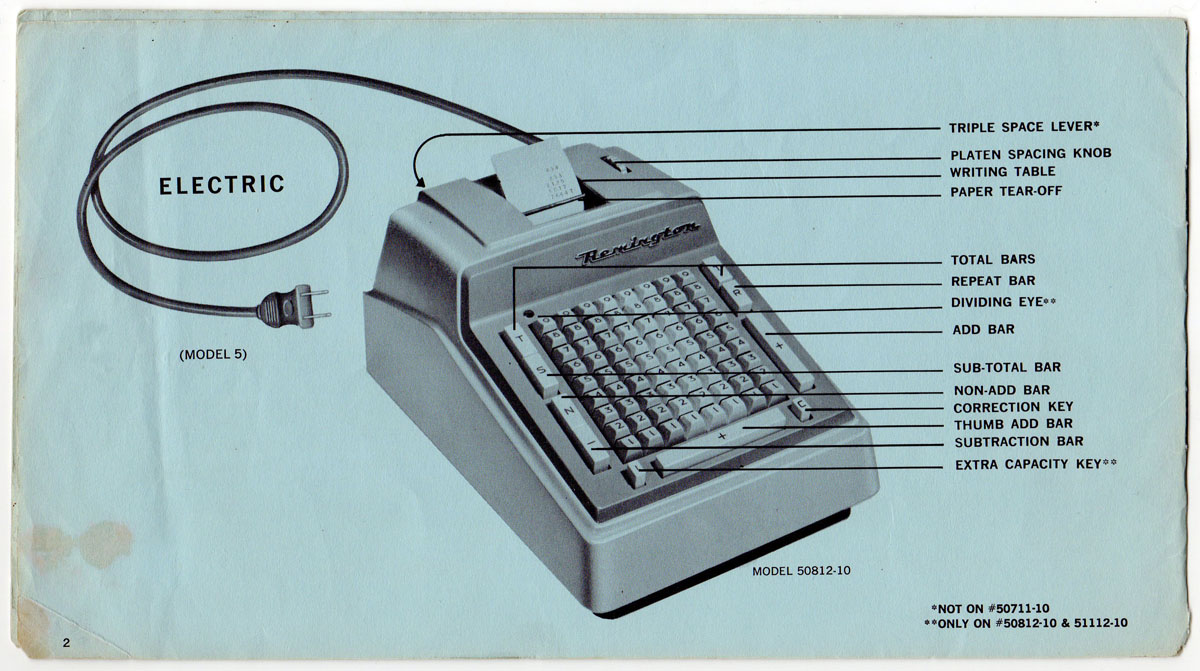
Click here for high-resolution version
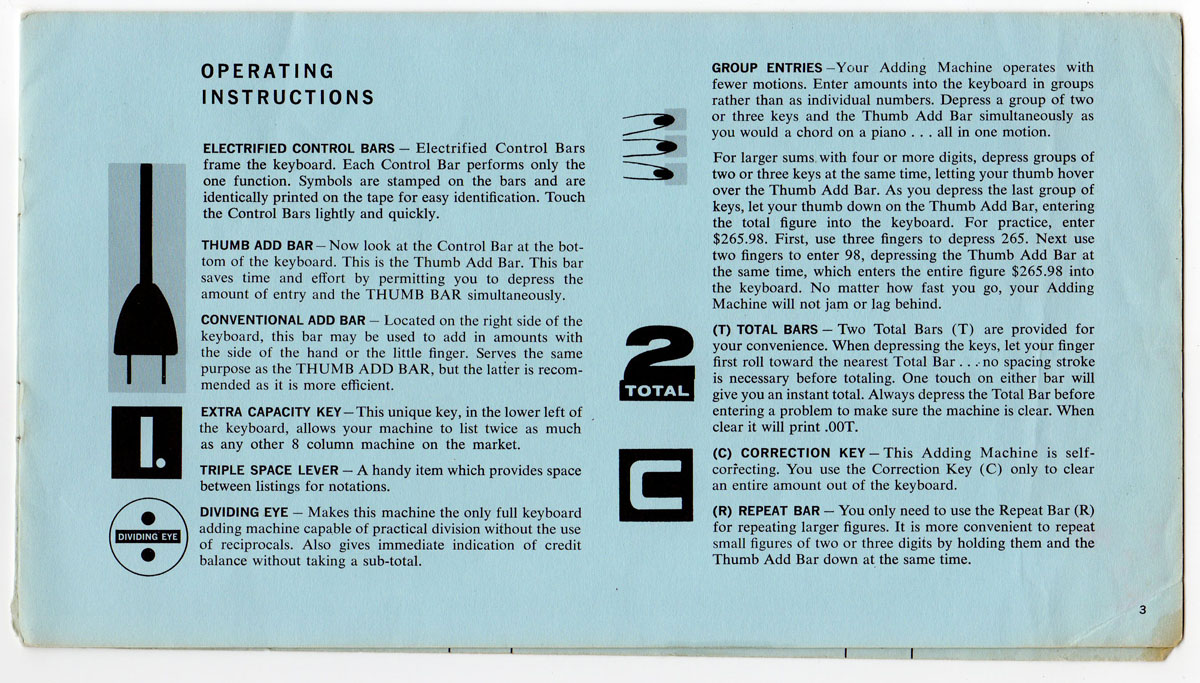
Click here for high-resolution version
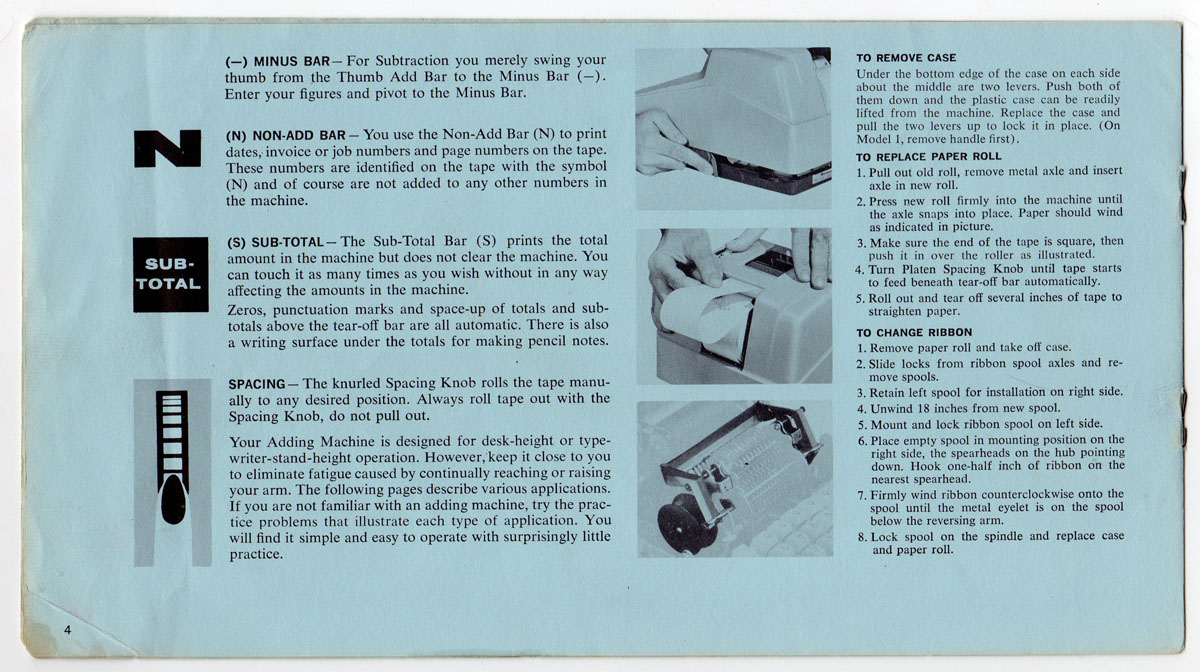
Click here for high-resolution version
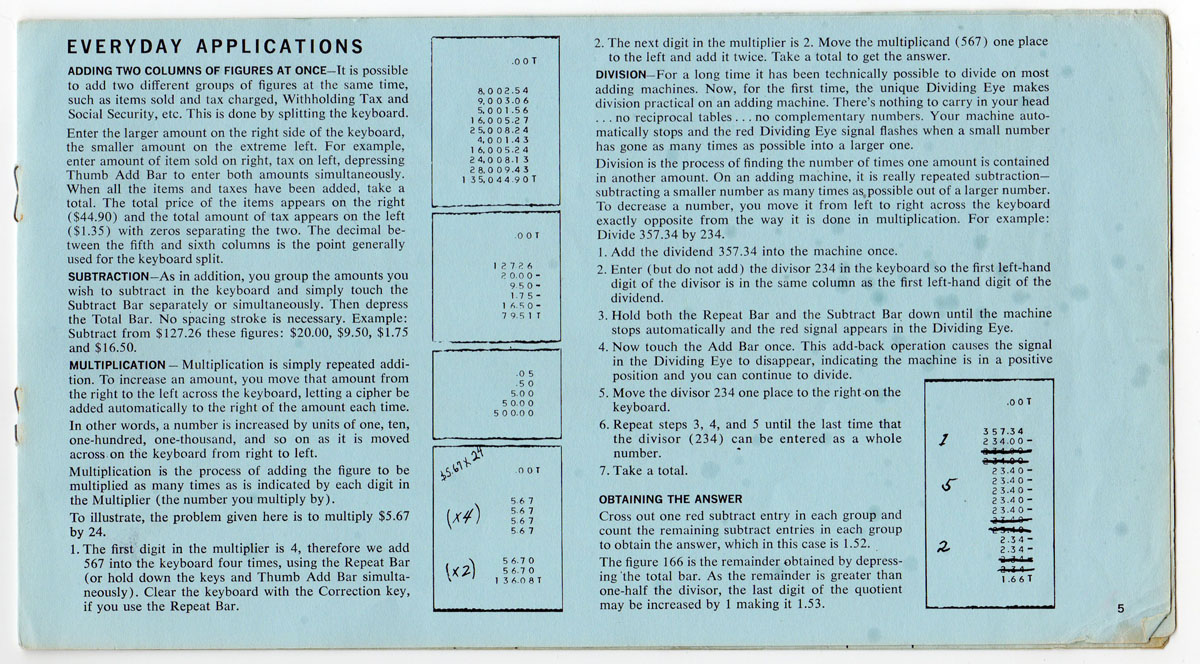
Click here for high-resolution version
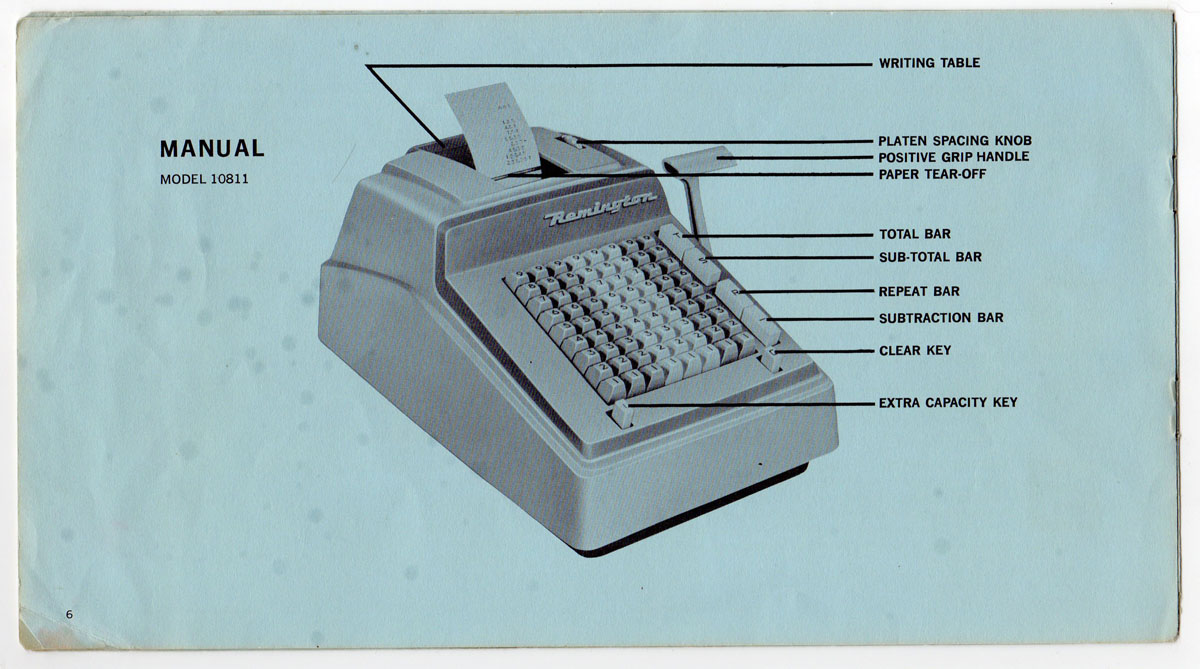
Click here for high-resolution version
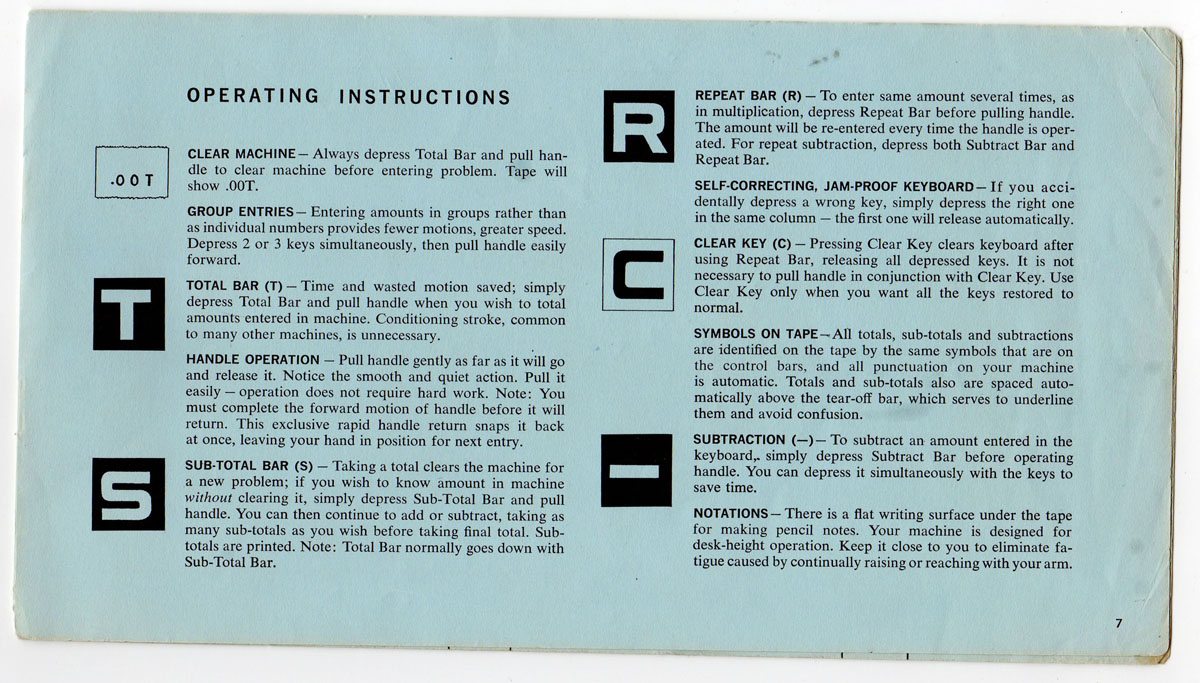
Click here for high-resolution version

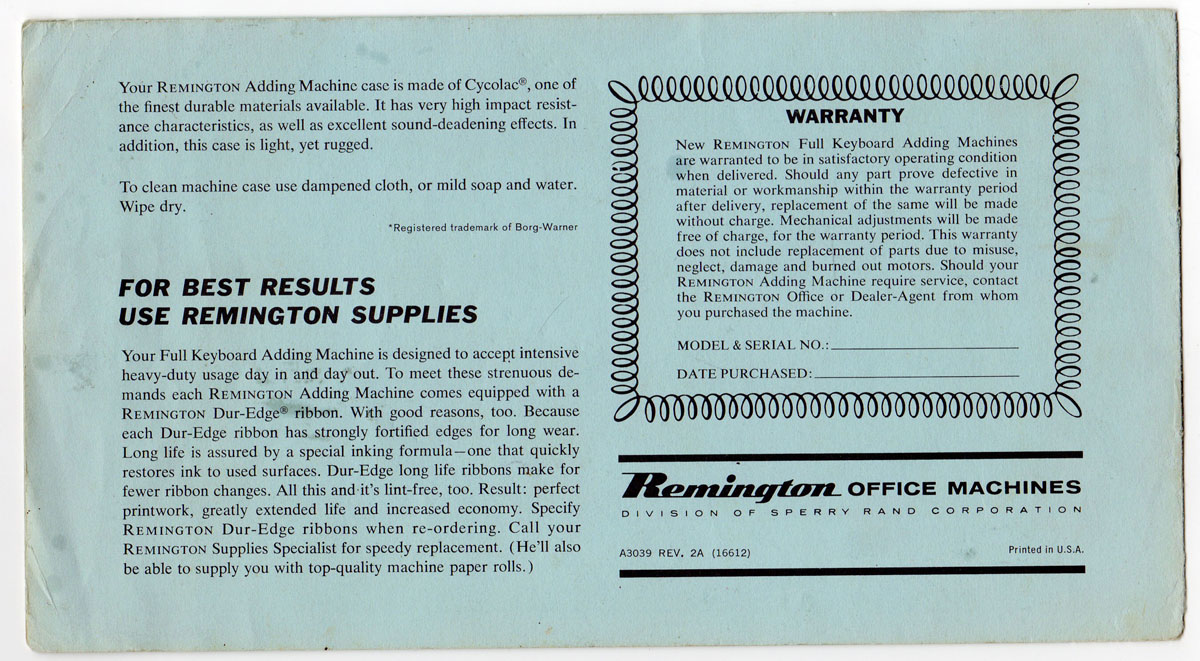

Very nice. I like old typewriters too. Just looking at them is fun. In HS in the early 50’s I was one of the few boys who signed up for typing class – got teased a lot my my friends –
Hi Henry: Typing well is such an important skill. I used to joke, when I was hiring for the editorial systems department at the Examiner and later at the Chronicle (and it wasn’t entirely a joke) that the two most important things I wanted to know about applicants were: 1. How fast do they walk; and 2. How fast do they type. Both closely correlate with quickness of mind, and with productivity. The last thing I looked for was some sort of technical degree. Did you know that Clint and Scott got poached by the New York Times? They also made an offer to Josh, but Josh chose to stay at the Chronicle. We built the best editorial systems department in the world at the Chronicle, something that people like Jonathan H. were totally unable to understand.
Congrats to Clint & Scott. I would like to have lived a bit of my life in New York. I really liked those two. I understand Josh’s decision, family home etc…
The editorial department was “greek” to me, though I loved the mystery of it. In fact you folks did speak a lot of Greek
Ah, Henry. But you worked with us, and you were wonderful to work with. Whereas others were out to take us down. Dan S. and Jonathan H., especially when prodded by Sasquatch, made our lives as miserable as possible.
HI,
Loved the article and looks of the machine so much I got a mechanical one off of eBay. I want to clean it up but I’m having trouble removing he handle. Any tips? Is it a simply ‘press on’? I get them for my Amish friends
As I recall, there is no screw or anything holding the handle on, only friction. Try gripping the handle at the shaft and pulling it away from the body of the machine.
I finally figured it out…kinda of messing it up in the process! You simply press the handle in and rotate the handle until it comes off. There is a spring washer inside the cover on the shaft that keeps tension on handle . When you press in you can rotate the handle shaft until the square of the handle matches the square of the attachment allowing it to come off. Sort of like the childs game of matching circles and square blocks!
I did force the handle off the shaft and then had to drill and place rivets in to hold it again! It is a press fit onto the shaft and should not be removed!